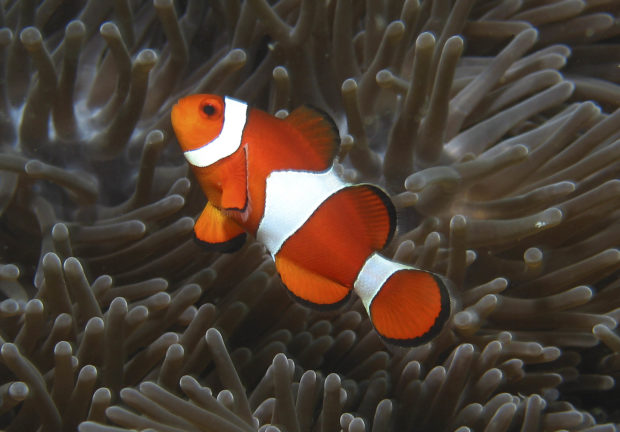Finding Nemo may become even harder, says climate study

Clownfish, also known as anemonefish —AFP
PARIS—The clownfish, the colorful swimmer propelled to fame by the 2003 film “Finding Nemo,” is under threat from warming ocean waters wreaking havoc with sea anemones, the structures that serve as its home, a study has found.
Closely related to corals, sea anemones are invertebrate marine creatures that live in symbiosis with algae, which provide them with food, oxygen and color.
Clownfish, also known as anemonefish, in turn use the structures as shelter to lay their eggs and raise their young—keeping the anemones clean in return.
Bleaching
For the study, published on Tuesday in the journal Nature Communications, a research team monitored 13 pairs of orange-fin anemonefish living among the coral reefs of Moorea Island in the South Pacific.
Article continues after this advertisementThey were monitored before, during and after the El Niño weather event that in 2016 caused major coral bleaching as the Pacific Ocean warmed.
Article continues after this advertisementHalf of the anemones in the study “bleached,” expelling the algae that live on them and turning bone white, the team found.
This happens in response to environmental stress, such as ocean warming or pollution.
Fewer, less viable eggs
“Among the clownfish living in the bleached anemones, the scientists observed a drastic fall (-73 percent) in the number of viable eggs,” said a statement from France’s CNRS research institute.
“These fish were laying eggs less frequently and they were also laying fewer and less viable eggs,” it said.
No changes were observed among fish with unbleached abodes.
Blood samples showed a sharp increase in levels of the stress hormone cortisol in the affected fish, and a “significant drop” in sex hormones that determine fertility, the team reported.
The health of the anemones and the fish improved three to four months after the end of the warming event.
Longer warming
Further research is needed, the team said, to examine the effects of a longer, or more intense, warming period, and whether affected fish would deal better or worse with a new bleaching episode.
Exceptional ocean warming events are predicted to become more frequent as the average global temperature rises.
Nearly 200 nations agreed under the 2015 Paris Agreement to limit warming to 2 degrees Celsius over industrial levels.
A level of about 1 degree C has already been reached and scientists fear the ceiling will be shattered, with potentially disastrous consequences for Earth’s climate.
In June last year, a study said many of the real-life Nemos swimming in children’s fish tanks around the world were caught using cyanide—another threat to the species.
“Finding Nemo,” the movie about the quest of a young fish separated from its family, resulted in more than a million clownfish being harvested from tropical reefs as pets. —AFP